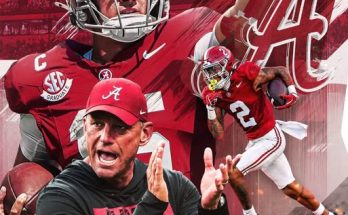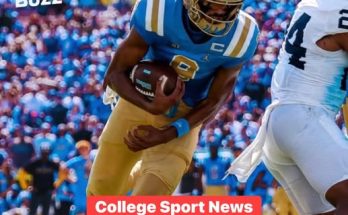The Detroit Lions have made a decisive move in reshaping their defensive lineup by cutting ties with a once-promising yet ultimately underperforming \$7.7 million defender. Over the course of three seasons, this player managed to record just two sacks—a statistic that starkly contrasts with the expectations that come with such a hefty contract and the investment the Lions made. This decision, though perhaps difficult, was inevitable and necessary for the team’s future defensive strategies.
When a team commits a significant portion of its salary cap to a player, it does so with the expectation that the individual will be a game-changer, a consistent force on the field who can pressure the quarterback, disrupt offensive plays, and bolster the team’s overall defensive presence. The player in question arrived with such promise, and the initial excitement surrounding his signing was palpable. Fans and analysts alike anticipated a boost in the Lions’ pass rush, a facet of their defense that had been lacking firepower in recent years.
However, reality quickly set in. Despite the player’s physical attributes and experience, his impact on the field was minimal. Over the span of three full NFL seasons, his sack total was a mere two—an abysmally low number for a player expected to be a defensive cornerstone. Sacks are one of the most tangible measures of success for edge rushers and defensive ends, as they directly translate to disrupting the opposing team’s offensive rhythm and potentially changing the momentum of games. In this player’s case, the low sack count was symptomatic of broader struggles, including inconsistency, missed assignments, and an inability to consistently beat offensive linemen.
This underperformance was compounded by the fact that his contract carried a significant financial burden for the Lions. At \$7.7 million per year, the team was investing heavily in a player who failed to deliver returns on the field. In a league where salary cap management is critical to building a competitive roster, allocating such a substantial amount to a player who contributes so little can have ripple effects. It limits the team’s ability to sign other key players, invest in free agents, or bolster areas of weakness through trades and drafts.
Moreover, the decision to cut the player was not just about his lack of sacks. The Lions have been striving to build a defense that is adaptable, aggressive, and capable of creating turnovers. Defensive impact isn’t measured solely by sacks; pressures, tackles for loss, quarterback hits, and overall disruption play important roles. Unfortunately, this defender struggled to make his presence felt in these areas as well. His snap counts dwindled, and he was increasingly relegated to a rotational role rather than a starter. This shift in role reflected the coaching staff’s diminishing confidence in his ability to influence games positively.
The Lions’ coaching staff and front office have had to balance patience with performance. The NFL is a league where development can sometimes take time, and teams often give talented players multiple opportunities to adjust and find their footing. But after three seasons of minimal production, it became clear that a change was necessary. The decision to move on is not a reflection solely of the player’s talent or effort but rather a strategic pivot by the Lions to better utilize their resources and build a more effective defensive front.
Cutting ties with a struggling player also sends a message to the rest of the roster and the fanbase. It demonstrates a commitment to accountability and performance standards. The Lions are signaling that they expect their players to earn their paychecks and contribute meaningfully to the team’s success. It can serve as motivation for other players to elevate their play and for new acquisitions to understand the competitive environment they are entering.
Looking ahead, the Lions face the challenge of filling the void left by this cut. Replacing a \$7.7 million defender, even one who underperformed, is not easy, especially within the constraints of the salary cap. The team will likely look toward a combination of approaches: developing younger players on the roster, pursuing value in free agency, and targeting specific defensive talents in upcoming drafts. The goal will be to find players who not only have the potential to generate sacks but also bring versatility and the ability to disrupt offenses in multiple ways.
The front office will need to be strategic and forward-thinking in their approach. While the player’s failure to deliver sacks is a glaring statistic, the overall impact on team dynamics and salary flexibility is equally significant. By cutting this player without delay, the Lions are freeing up resources to explore different options that might better fit their defensive scheme and culture. This move opens up opportunities for emerging talent who can inject energy and a renewed sense of purpose into the defensive unit.
From a broader perspective, this situation illustrates the high stakes and unforgiving nature of the NFL. Even highly paid veterans with previous success or reputation can find themselves on the outside if they fail to perform at the expected level. Teams must constantly evaluate their rosters with a critical eye and make tough decisions to remain competitive. The Lions’ move underscores the relentless pursuit of improvement that defines professional football.
In conclusion, the Detroit Lions’ decision to part ways with their \$7.7 million defender after just two sacks in three seasons reflects a clear and necessary response to underperformance. The player’s inability to generate pressure and disrupt opposing offenses made him an untenable option for a team striving to strengthen its defense. By acting swiftly and decisively, the Lions are positioning themselves to reallocate resources toward more productive players and to foster a culture of accountability. While this chapter closes on a disappointing note for the player, it opens a new door for the Lions to rebuild and refine their defense with a focus on results, resilience, and future success.



